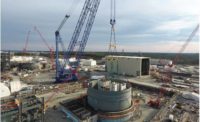Bottom-Line Environmentalism for Equipment Owners
Heavy equipment owners make their living and help sustain our economy with machines that some consider environmentally irresponsible. It’s a harsh judgment that becomes less accurate every day.
When it comes to the environment, it’s tough to escape scrutiny. If you drive a car, consume fossil fuel, electricity or purchase goods that come in a disposable container you’re under the microscope.
Encouraging businesses to be “green” and shoulder financial implications that accompany those efforts can stir emotions.
It is in our best interest to get past the political posturing and rhetoric and address the real issue: How can we meet environmental standards with the least impact to our bottom lines? Restricting work schedules through legislation is short-sighted and at this time (fortunately) unlikely, but a somewhat similar, more business-friendly approach is properly training operators to work more efficiently.
From a strictly dollars-and-cents perspective, safety training pays for itself by reducing accidents and avoiding OSHA fines. Classes on proper operating technique take it a step further: Fuller buckets and faster cycles add up, and over the course of a larger project can shave time off expenses and emissions. Teaching technique also reduces the repair bills that accompany equipment abuse.
Another approach to lowering emissions is retrofitting your machine’s exhaust with an EPA-approved reduction technology. The positives include a smaller investment -- even grant eligible in some cases -- and having a manufacturer warranty. Remember, Texas does not keep lower-tiered engines from working on job sites. Unless this changes, this investment will help clean the air but will not come with any real financial reward.

PARKER
Replacing or rebuilding an engine to current EPA standards will bring a better ROI and is grant eligible. Assuming your frame, cab and major components have the operating hours left in them, you can significantly extend machine life. Before heading down this road, research the process. Will the new engine fit in the old engine compartment? What other parts need to be updated to transfer power to the rest of your machine?
The next option is replacing the old unit with a new one. Grant money once again can come into play and may surpass the trade-in value. But don’t think that is the only way to practice bottom-line environmentalism.
Based on EPA ratings, a certified Tier 3 engine produces less than a third of the emissions of the best performing Tier 0 counterpart. When Tier 4 rated engines hit the market they will produce even less particulates.
Lower maintenance costs at the start of ownership help, but they are an expense with limited control. Cutting fuel consumption is different. Considering that the price of diesel will likely increase in the future, fuel savings are the surest way to make a difference.
When looking at the total cost of ownership, make fuel consumption comparisons a central part of your research. Stack your potential new machine choices against each other and your current unit. Replacing older, high horsepower machines that work a full schedule will bring the most bang for your buck, especially if you keep and maintain the new unit for more than just a few years.
If you download and evaluate files from your unit’s on-board computer system, you can take things even further by addressing excessive idle time and other wasteful or harmful operator practices that currently fly under the equipment supervisor’s radar.
Hybrid heavy equipment is now entering the market. Hybrid cars have largely been an exercise in feel-good technology.
The difference is in the diesel consumed and saved. The construction equipment model works on a large enough volume that a hybrid could be cleaner and cheaper. It will take time to test reliability and see if maintenance costs remain in line with current standards. If the market reaches its comfort level and manufacturers can produce them on a larger scale, hybrid machines could take hold.
The best way for the government and manufacturers of “green” products to encourage environmentalism is by strengthening the bottom line, not taking a bite out of it.


